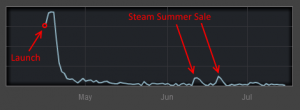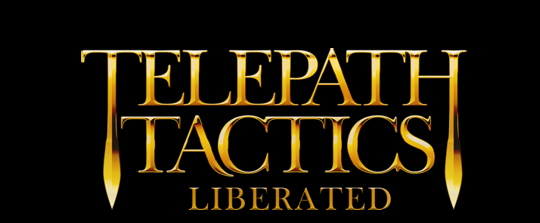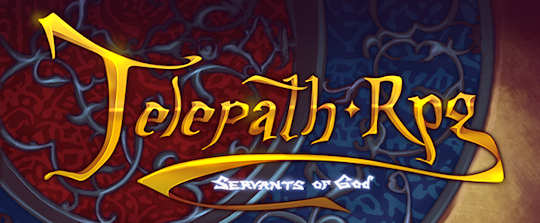In Part 1, we discussed what Telepath Tactics cost to make; what sort of sales it needed in order to reimburse me for those costs; and how many additional units it needed to sell to allow me to meet my ultimate goal of leaving behind my day job and developing games full-time.
Bearing in mind that most of the game’s costs were paid up-front by its successful Kickstarter campaign, and that most sales were expected to come through various outside distribution networks, I concluded that I’d need to (a) sell about 1,455 copies to make back my out-of-pocket costs, and (b) sell roughly 7,375 copies to be able to quit my day job and make games full-time.
Initial sales numbers
With that in mind, how is Telepath Tactics doing so far? Three months after release, I have sold approximately 3,000 copies total across all platforms, with gross sales revenue upwards of $36,660.
Net sales revenue, which accounts for the cut taken by the various distribution platforms, is a good deal lower than the gross–note that net is the amount I actually receive. Valve prohibits developers from disclosing data regarding sales made on Steam, so I cannot reveal my net revenue or otherwise break down my total sales by distribution channel. Ultimately, however, the breakdown doesn’t really matter for my purposes: regardless of what the distribution is, I (1) succeeded in fully recouping my out-of-pocket expenses, (2) made a small profit, and (3) failed to make enough money at launch to support myself making a game full-time over the next two years.
Is that good?
In a word: no. SteamSpy estimates that the average RPG on Steam alone has more than 10 times that number of owners. But more importantly, these sales numbers don’t meet my ultimate goal of allowing me to move into game development as a sustainable full-time job.
Someone unfamiliar with the games industry might think that $36,660 is pretty good for just the first three months of a game’s life span–and it would be, if I were a developer who was able to pump out games every 6 months, or even every year. But Telepath Tactics began development in 2009–$36,660 is not anything close to a sustainable amount of revenue for a game with such a lengthy development cycle.
And unfortunately, the fact that it’s only been 3 months since release isn’t a reason to expect much more in the way of sales revenue. Games mostly behave like movies opening in theaters, with launch week analogous to a movie’s opening weekend: traditionally, the bulk of a game’s profits are made at (and shortly after) launch, with a mere drip-feed of sales following from that point onward.
True to form, sales of Telepath Tactics have thus far followed this “L” trajectory. The vast majority of all money made by the game was made in its first week, before the game dropped too far off of Steam and GOG’s respective “new releases” charts for prospective buyers to easily find it. Telepath Tactics is now in what is traditionally referred to as “the long tail”–the flat, horizontal part of the “L.”
There has been some reason to dispute the “long tail” model lately, as the emergence of bundles and major sales events over the past few years has managed to put some spikes into the long tail for digitally distributed video games. These events allow developers to wring out the proverbial towel and sometimes get significant sales spikes during otherwise fallow periods via a phenomenon that economists call “price discrimination.”
 Following this theory, I participated in Steam’s summer sale. This gave the game an extremely modest bump in both sales and revenue during the first few days and last few days of the sale. Had Valve chosen Telepath Tactics to be a daily deal, the sales bump would likely have been much more significant; but they did not, and it was not.
Following this theory, I participated in Steam’s summer sale. This gave the game an extremely modest bump in both sales and revenue during the first few days and last few days of the sale. Had Valve chosen Telepath Tactics to be a daily deal, the sales bump would likely have been much more significant; but they did not, and it was not.
Participating did not merely boost sales a bit–it also had negative effects. Selling Telepath Tactics at a significant discount attracted players who were less invested in the title, and several of them left negative reviews after playing the game for a short period of time. This hurt the game’s review rating, which pushed it further back in the charts, hurting its visibility–and thus, hurting full-price sales of the game going forward after the sale. Ultimately, participating in the Steam summer sale did not provide enough of a spike to make the difference between financial success and financial failure, and in the long term, it may even have been a net negative.
Conclusion
Telepath Tactics has received a bunch of critical praise from the print press for its clever mechanics and tight design–but from a commercial standpoint, it has not passed too terribly far beyond the minimal bar of “don’t actually lose money.” If it weren’t for the successful Kickstarter, Telepath Tactics would be tens of thousands of dollars in the red; and Kickstarter or no, if I’d needed to actually be paid for all those years I spent making the game, I would be left in a terrible financial position. (Thankfully, the game did have a successful Kickstarter, and I don’t care about back pay.)
I have some theories as to why it didn’t sell as well as I had hoped; I will explore those in a future post. For now, though, I’ve learned some valuable lessons that I’ll be taking forward with me into future projects. While Telepath Tactics didn’t meet my primary goal of permitting me to leave my day job and develop my next game full-time, it did do some very valuable things for me: it exposed my work to a much larger audience; it made me progress toward accumulating 1,000 true fans (or 10,000 modest fans, or some agreeable combination of the two); and it provided me with a robust engine and some great pixel art assets that I can use to quickly develop and release future titles.
That last part is important–if I can get to a point where, reusing the existing engine and assets, I can develop and release one new RPG per year, then sales comparable to Telepath Tactics’s sales would actually be quite sustainable for me.
However, I’m not there yet–I don’t yet have development down to a formula that would permit such a volume of quick releases. And aside from which, I’m simply not ready to surrender to creative stagnation: I have too many exciting ideas about new directions I want to strike out in with RPG and strategy game design. Indeed, I already have a couple of secret projects in the works with some of those ideas; my hope is that I will be able to make them more commercially successful than I was Telepath Tactics.
I’ll be announcing more as soon as I have enough to show. Until then, you can keep an ear to the ground on Twitter, on the forums, or even here on the Sinister Design site itself. Thanks for reading, folks!






